Whether you are a sport diver, technical diver, freediver, spearo, or a happy holiday snorkeler, the need for a good set of fins is a prerequisite to propelling yourself through the water. Without them we are pretty much immobile, certainly in dive gear. Oh, and in the dive world we don’t call them flippers. Flipper was a dolphin and we don’t take his name in vain! We call them fins.The number one mistake divers make when buying their fins is not trying on different brands before they buy because it’s too hard to find stores that carry all brands (and sizes). The vast majority of people will not fit into the ‘one size fits most’ fins that you find in many dive shops.
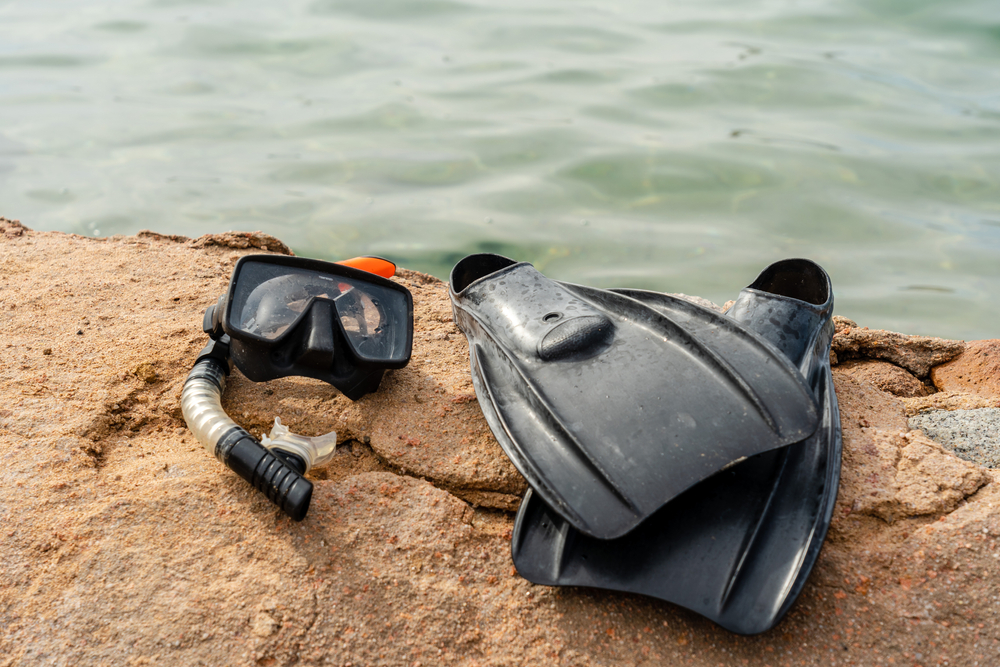
Let’s Get Started
While the idea of fins is simple, the fin designs and options available to water-lovers are quite vast. When evaluating which fins will best meet your needs, keep the following questions in mind:
- What sport do I plan on participating in, e.g. scuba diving, snorkeling, free diving, spear fishing, or swimming?
- What temperature of water will I be exposed to?
- Is propulsion important to me?
Diving into the world of fins can be a dizzying experience. There are so many choices, and it’s hard to know which ones will work best for you.
Fortunately, there are some questions you should ask yourself before diving in. The answers to these questions will help narrow down your options and lead you towards the perfect fin for your needs. What sport do I plan on participating in? What temperature of water will I be exposed to? Does propulsion matter to me? Keep reading for more information about how these factors affect your choice in fins!
What Sport?
When choosing fins, the sport you plan to use them in has a huge bearing on which fin type will be best for you. For instance, if you’re interested in snorkeling and get water-shy easily, open heel fins are going to be less intimidating than a full foot pocket model with a strap.
What Temperature of Water Will I Be Exposed to?
If you’re going somewhere with cold water, your fin choice may be different then if you were planning a trip to the tropics. If there is any chance that your feet will get cold during use, choose a full foot pocket model that will trap heat more naturally than an open-heeled fin.
If you’re going somewhere with warm water, are you more concerned about comfort or speed? If comfort is key, consider a full foot pocket model that will have more range of motion and toe angle options than an open-heeled one. However if speed is your biggest concern, you’ll want an open heel model to reduce drag.
In the end, your personal preferences will be the deciding factor in which style you choose, but knowing what factors are important to you is a great first step.
What Propulsion Do I Want?
While most fins allow users to kick forward, some transfer power more efficiently than others. If propulsion is important to you (typically for long distance swimming), then consider the type of material used in the blade, how the fins are constructed (open vs closed heel), and fin blade area size.
Sport-Specific Design
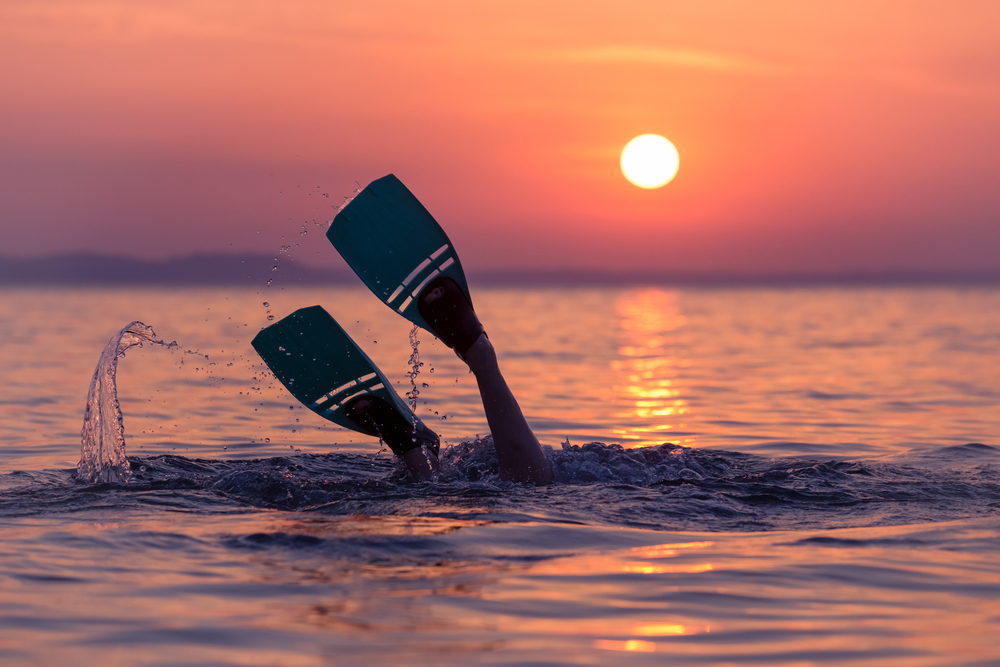
Sport-specific design is the idea that each sport requires different equipment in order to be successful. For example, if a little fin is good, a lot must be better. But this statement isn’t true for all sports. Fins are just one piece of equipment for diving and how well you perform can depend on what type of fins you’re using.
Swimming/Snorkeling/
Recreational swimmers and snorkelers tend to fall into the “less is more” category when it comes to buying fins. The majority of swimmers and snorkelers don’t need the bells and whistles that many fins offer. Typically, a more basic fin design will meet your needs. The length of fin needed by swimmers and snorkelers is typically shorter than those needed by scuba divers and are definitely shorter than those used by free divers.If you feel like you are fighting your fins rather than being aided by them, then your fins are probably meatier than what you need. A simple smaller design is usually much better for swimmers and snorkelers.
Swimming/Snorkeling/Recreational swimmers and snorkelers tend to fall into the “less is more” category when it comes to buying fins. The majority of swimmers and snorkelers don’t need the bells and whistles that many fins offer. Typically, a more basic fin design will meet your needs. The length of fin needed by swimmers and snorkelers is typically shorter than those needed by scuba divers and are definitely shorter than those used by free divers.If you feel like you are fighting your fins rather than being aided by them, then your fins are probably meatier than what you need. A simple smaller design is usually much better for swimmers and snorkelers.
Fins for recreational diving/free-diving:
For recreational divers, less is more with smaller and shorter fins being better. For scuba divers and free-divers longer, larger and thicker materials (especially blades) will provide the propulsion needed to cover greater distances. For this reason, you’ll typically find that scuba fins are longer and/or thicker than what is used by snorkelers.
Fins for professional Scuba Diving:
Scuba fins are longer, larger and usually thicker (which provides a larger blade area) in design compared to the fins used by swimmers or snorkelers. This enables scuba divers to swim faster with less effort and allows for easier propulsion in deeper water where the density of water makes it more difficult to move through.
Professional divers, such as commercial fishermen or salvage/wreck divers, typically require thicker blades than any other category of diver. This is due to the fact that they need their fins in deeper waters (where swimming speed becomes important). There are also a lot more bottom time requirements for these divers.
Fins for commercial spearfishing
Fins for commercial fishermen and other salvage/wreck divers are typically the thickest, longest and heaviest among all types of fin designs. These fins must be able to withstand the pressures of deeper water and the abuse caused by constantly contacting ocean floors. Many commercial fisherman prefer closed-heel fins, which help protect the heal. Commercial fisherman and other commercial divers also require fins that are easy to put on/remove in tight spaces with less wasted motion as time is money for them. For these reasons, most commercial fishermen prefer open-heel fins over closed-heel fins.
Commercial fisherman can work anywhere from 10 to 100 feet deep. Most of them use long fins, often 20-inches or longer! The blade length on these long fins is around 8 to 9 inches and the diameter of the footpocket is between 3 and 4 inches thick. These thicker blade designs provide greater thrust when needed (to move through heavy currents) as well as added durability due to additional weight and strength.
Safety Tip : Commercial fishermen and other salvage/wreck divers should always wear thick, rigid fins with a good fin strap. These types of fins as well as the added weight of thicker materials help protect your ankles from possible injury when walking over rocky sea floors or ship wrecks where you may encounter loose rocks and/or sharp metal objects.
Types of Fins:
There are many different types of diving fins, all of which exhibit differing levels of performance and comfort. Some are designed for recreational use while others are made specifically for more advanced (or specialized) applications. The information below will help you gain a better understanding of the various fin characteristics that exist.
Closed-Heel vs. Open-Heel Fins:
Some fins are made with a closed heel while others have an open heel design. Which is better? It depends on your preference and needs. Some people prefer the more traditional open-heeled fin, mainly because it keeps their foot warm and allows for easy entry/exit. Additionally, some diving instructors prefer open-heeled fins (due to problems that can develop with closed-heel fins when you’re in the water for long periods of time). Open-heeled fins also provide greater ankle mobility (since they aren’t clipped together like closed-heeled fins).
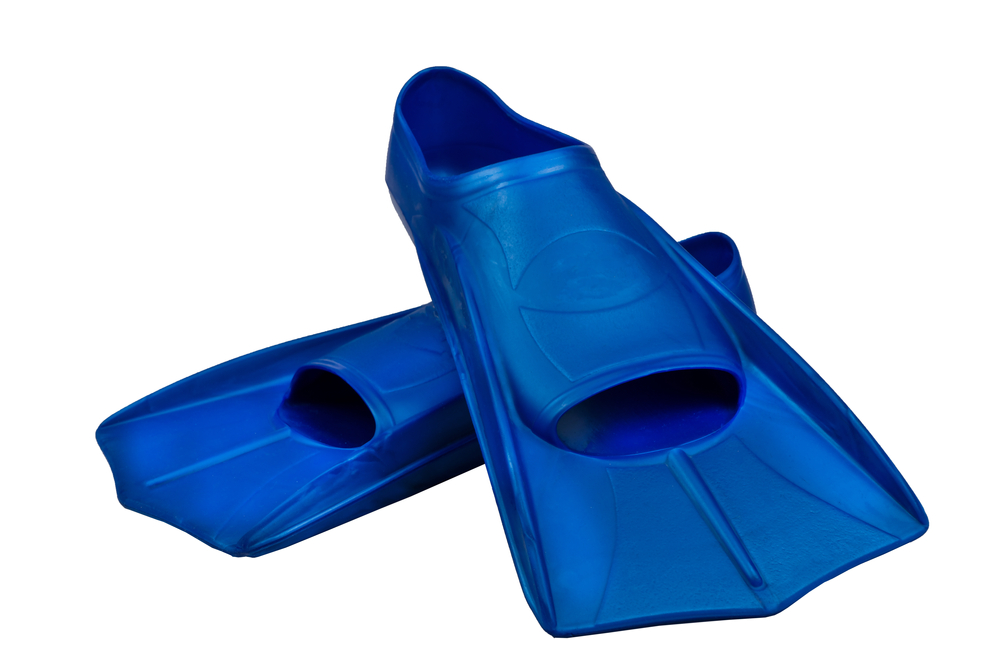
However, many people find open-heeled fins to be less stable. For example, many fin clips are known for coming undone and/or falling off when you’re in the water. This is why most commercial fisherman prefer closed-heel fins as they remain secure on their feet (and are often constructed of thicker materials).
Size Matters:
Besides blade length and thickness, another important factor in the performance of any fin design is size (this includes footpocket diameter as well as blade length and thickness). Fins are commonly sized by shoe sizes. Most divers will be able to fit into standard-sized fins, but larger or smaller sized fins can provide better comfort for many people. For example, using a pair of fins that are too big will not only be unrealistic (because they’ll flail around and/or slip off your feet), but also have an adverse effect on your balance, mobility and performance. For the most part, you should choose the size of fin that is closest to your shoe size.
Larger fins are typically used by larger divers as a means of providing extra thrust and more power. However, going too big can also result in a loss of control and/or reductions in maneuvering capabilities. It is important that you choose the right-sized fins for your needs and take into account your body size relative to blade length, footpocket diameter, etc.
Fins with Composite Blades:
Composite fins typically feature blades made from a combination of different materials (such as fiberglass, graphite or nylon) and are generally designed for recreational use. For example, most triathlon fins have composite blades because they are typically used only during the swim portion of a race. In fact, many triathletes find it necessary to purchase multiple sets of fins just so they can have one that is optimized for the swim, one that’s designed for speed (during long distance races) and a third set specifically for training purposes. Recreational-use fins with composite blades are typically fairly affordable as well.
Fins With Silicone Blades:
Many experienced divers prefer diving fins with silicone blades. These tend to cost a little bit more than their composite counterparts, but are usually more comfortable and feel better when divers strike the water with them. This is because they have a greater ‘give’ when you’re kicking (and won’t hurt your feet as much). However, silicone fins can sometimes be a bit more challenging to control when they’re moving through the water (because of their increased flexibility and resilience).
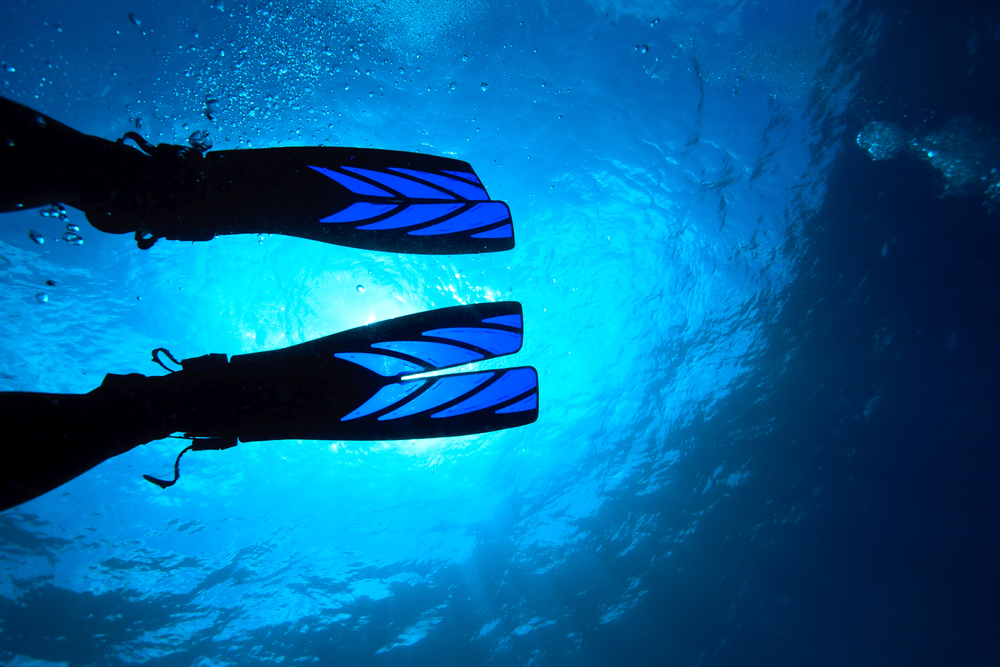
Diving Fin Accessories
Diving fin accessories are a great way to enhance your time in the water and to extend the life of your fins. Below are some fin-related accessories that you may want to purchase or invest in.
Spring straps are an excellent invention, which can help you battle with rubber straps and win the war. They are easy to use and will make getting ready for shore dives a lot easier.
Utility straps will help you keep your fins with you after a shore dive. They will also prevent anyone else from mistakenly taking them.
Permanent marker is another important accessory as it helps you identify your own gear, instead of someone else’s if they mistakenly pick up something and take it home with them.
If your strap breaks or you run out, it is a good idea to have a replacement on hand. It is better than having to go without them at all during a dive trip.
Another necessary accessory for a scuba trip are gloves. There are several different types available, all designed to suit various needs.
What Size Fins Do I Need?
One of the most common questions that people have about scuba diving is what size fins they need. There are too many variables to give everyone the perfect answer, but this article will help you find your best option for a good fit.
Fins come in several types of sizes. Men’s fins tend to be larger and women’s smaller. Furthermore, your height affects the fin size that you require. Fins are measured by foot lengths, so if you have a 28-inch foot length then you would be looking for a short or medium-sized fin.
Now that we know how to measure our foot length and what thickness of fin we need, let’s look at the different types available:
Open-heel fins are good for entry-level divers. They are simple to remove and reassemble once you get out of the water.
Closed-heel fins are more advanced diving fins that feature a stiffer spring strap inside. They take some practice, but once you get them on you won’t have to worry about losing your fin mid-dive.
Split-fins are more difficult to use than other fins, but they provide better propulsion which means you can swim faster with them. If you plan on doing a lot of fast swimming then this could be the best option for you.
Conclusion
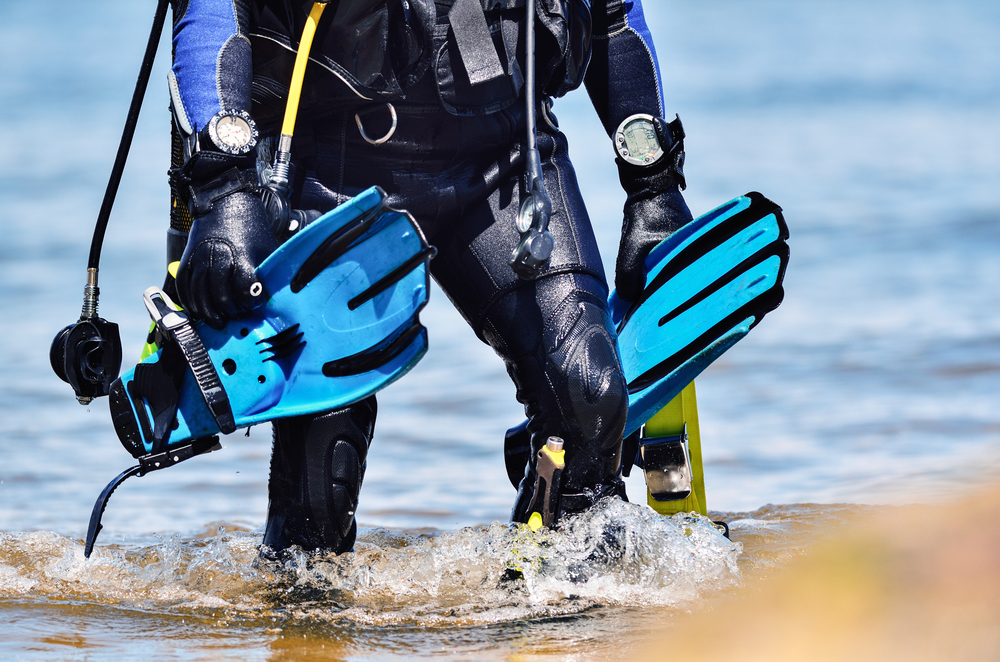
Diving fins are designed for a variety of purposes and can be used by both recreational divers and professional athletes. They come in different types, which will depend on your preferences and skill level as well as the type of diving you’ll be doing (e.g., open-heel vs closed-heel). If you’re not sure what size to purchase or if this is something that interests you at all, please reach out to our team! We would love to help answer any questions about these accessories or even recommend an appropriate set based on your experience levels. What other things do we need when going on a scuba dive? There’s plenty more information below so don’t hesitate to take another look before contacting us!






